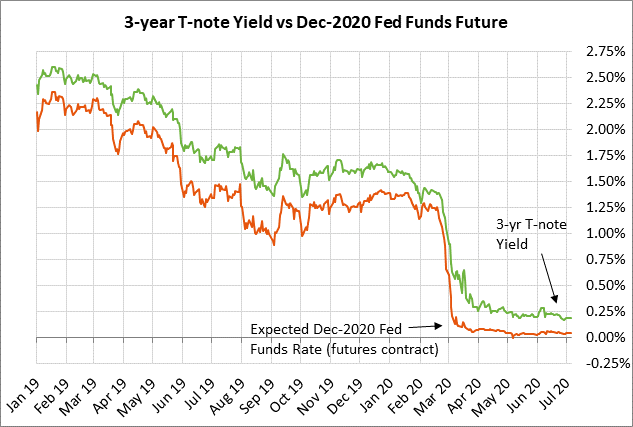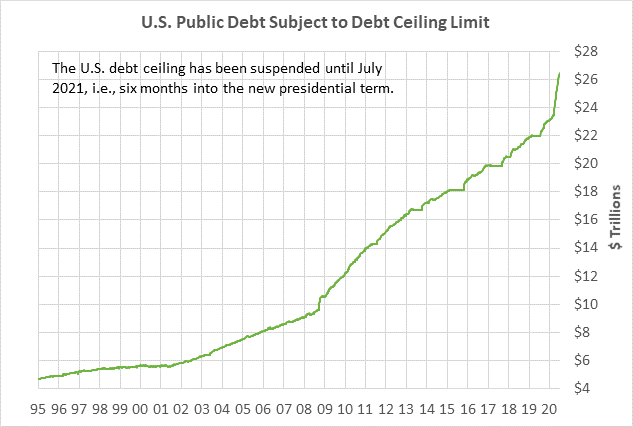- Global stocks get a boost from soaring Chinese stocks
- JOLTS job openings expected to fall to 6-year low in May
- Treasury sells record amount of 3-year T-notes today as national debt soars on pandemic expenses
Global stocks get a boost from soaring Chinese stocks — Global stocks rallied sharply on Monday on support from the sharp rally seen earlier in the day in Chinese stocks. The Shanghai Composite index on Monday soared by +5.71%, posting a new 2-1/2 year high and easily taking out the previous high posted in April 2019. The Shanghai index has rallied by a massive +12.5% just in the past five sessions.
Monday’s rally in Chinese stocks got the ball rolling for European and U.S. stocks despite alarming U.S. pandemic news. The Euro Stoxx 50 index on Monday closed sharply higher by +1.69%. The S&P 500 index on Monday closed sharply higher by +1.59% and posted a new 3-1/2 week high. The Nasdaq 100 index on Monday rallied to a new record high and closed the day up +2.54%.
Chinese stocks rallied sharply on reports of heavy short-covering sparked by a front-page editorial in China’s state-run Securities Times, saying that fostering a “healthy” bull market after the pandemic is now more important to the economy than ever. Chinese investors took that to mean that the Chinese government is fully behind the stock market rally. Chinese investors are also optimistic about the government’s ability to largely snuff-out the pandemic in China. There is also talk of better business conditions in Hong Kong after the new security law dampens the chances for protests.
The sharp rally in U.S. stocks, however, looked incongruous with America’s record pandemic statistics. U.S. coronavirus infections on Sunday rose +2% from Saturday to a record 56,000. The U.S. pandemic is currently much worse than it was in March when the U.S. went on lockdown.
Investors seem to be looking past the pandemic, however, since no state seems willing to return to a full lockdown of all non-essential businesses no matter how many infections they see. The American public now seems willing to accept a high level of collateral damage from Covid infections-deaths and stress on the U.S. health care system. The markets also seem to be strongly hoping for an effective and widely-available vaccine by early 2021, which could remove Covid for good as a threat to businesses and corporate profits.
Yet, in the meantime, the soaring rate of new Covid infections might force some states to return to full lockdowns if their hospitals become overrun with patients. Any new lockdowns would be a wake-up call for investors that the coast is certainly not yet clear.
U.S. stocks on Monday also rallied on another dose of better-than-expected U.S. economic news. The June ISM non-manufacturing index jumped by +11.7 points to a 4-month high of 57.1, stronger than expectations of +4.8 to 50.2. That added to last Thursday’s favorable news that June payrolls rose by +4.8 million, much stronger than market expectations of +3.2 million.
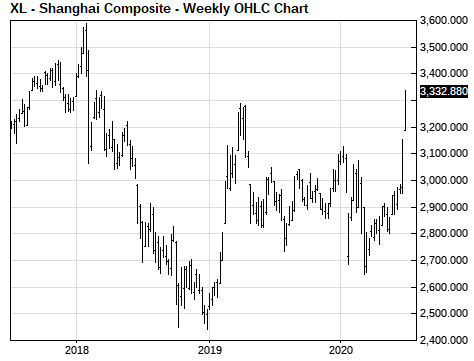
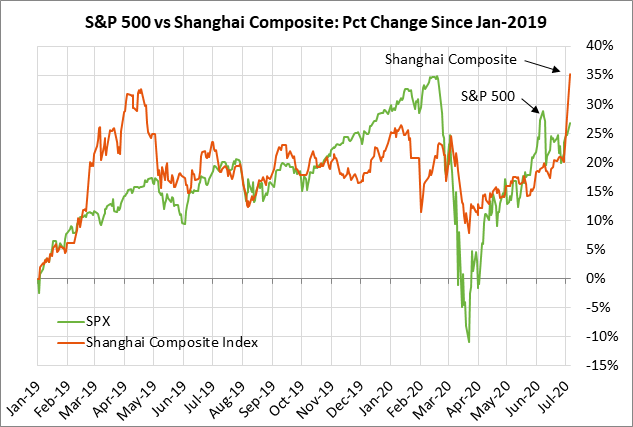
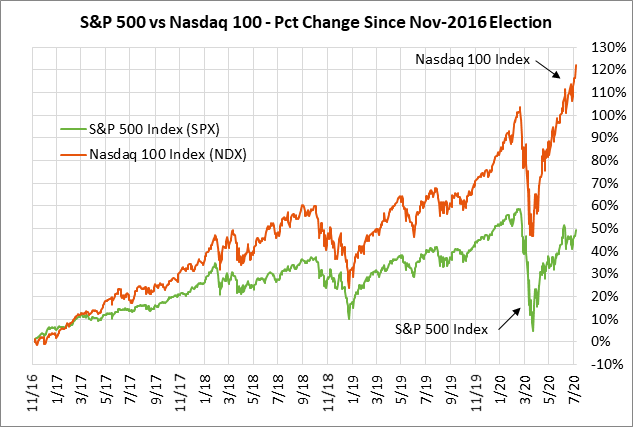
JOLTS job openings expected to fall to 6-year low in May — The consensus is for today’s May JOLTS job openings report to show a sharp decline of -546,000 to 4.5 million, adding to April’s plunge of -965,000 to 5.046 million.
JOLTS job openings fell to a 5-year low of 5.046 million in April, and are expected to fall farther to a 6-year low of 4.5 million in May, a level not seen since 2014. The JOLTS job openings report lags the payroll data by a month, meaning that today’s report is still stuck back in May when only a limited number of states were reopening.
In more up-to-date information, payroll jobs rose by +2.7 million in May and +4.8 million in June as employees were called back to work. However, U.S. payrolls are still down by a net 15 million jobs from February’s record-high. The U.S. labor market has a long way to go before it can regenerate 15 million lost jobs.
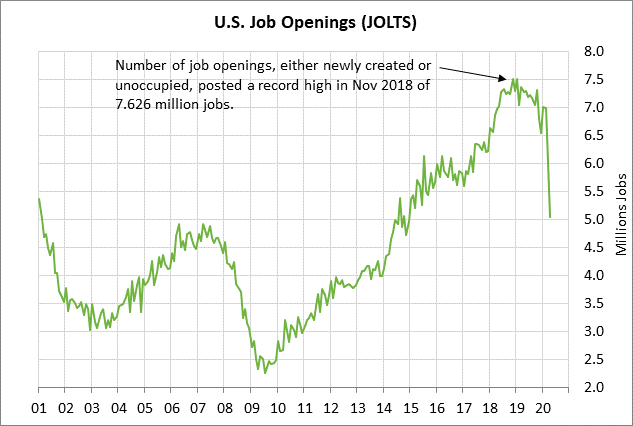
Treasury sells record amount of 3-year T-notes today as national debt soars on pandemic expenses — The Treasury today will sell $46 billion of 3-year T-notes. The Treasury will then continue this week’s $94 billion coupon package by selling $29 billion of 10-year T-notes on Wednesday and $19 billion of 30-year T-bonds on Thursday. This week’s 10-year and 30-year auctions will be the second and final reopenings of May’s issues.
The $46 billion size of today’s 3-year auction is up by $2 billion from last month’s $44 billion auction and is up by $8 billion from the $38 billion auction that prevailed in 2019 and early 2020 before pandemic expenses caused the federal budget deficit to explode. The national debt has gone vertical since the pandemic began, soaring by $3 trillion since the end of February to a record high of $26.45 trillion. The national debt has now nearly tripled since 2007.
Today’s 3-year T-note issue was trading at 0.19% in when-issued trading late yesterday afternoon. The 3-year T-note yield has been locked in a very narrow range since March because the markets are not expecting any change in the Fed’s target rate at least through 2023.
The 12-auction averages for the 3-year are as follows: 2.45 bid cover ratio, $38 million in non-competitive bids, 3.6 bp tail to the median yield, 27.3 bp tail to the low yield, and 61% taken at the high yield. The 3-year is the least popular coupon security among foreign investors and central banks. Indirect bidders, a proxy for foreign buyers, have taken an average of only 49.4% of the last twelve 3-year T-note auctions, well below the median of 61.5% for all recent Treasury coupon auctions.
